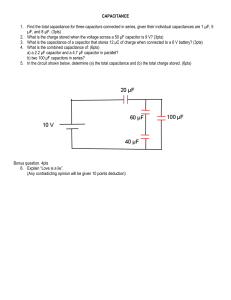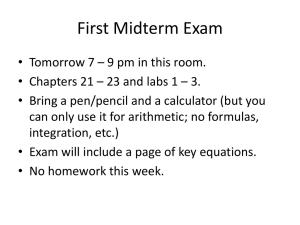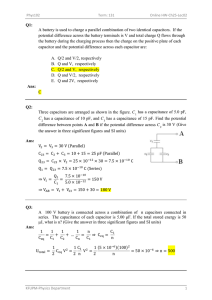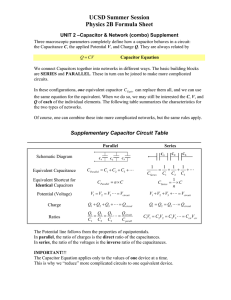PH 112 Capacitance January 31, 2005 MJM
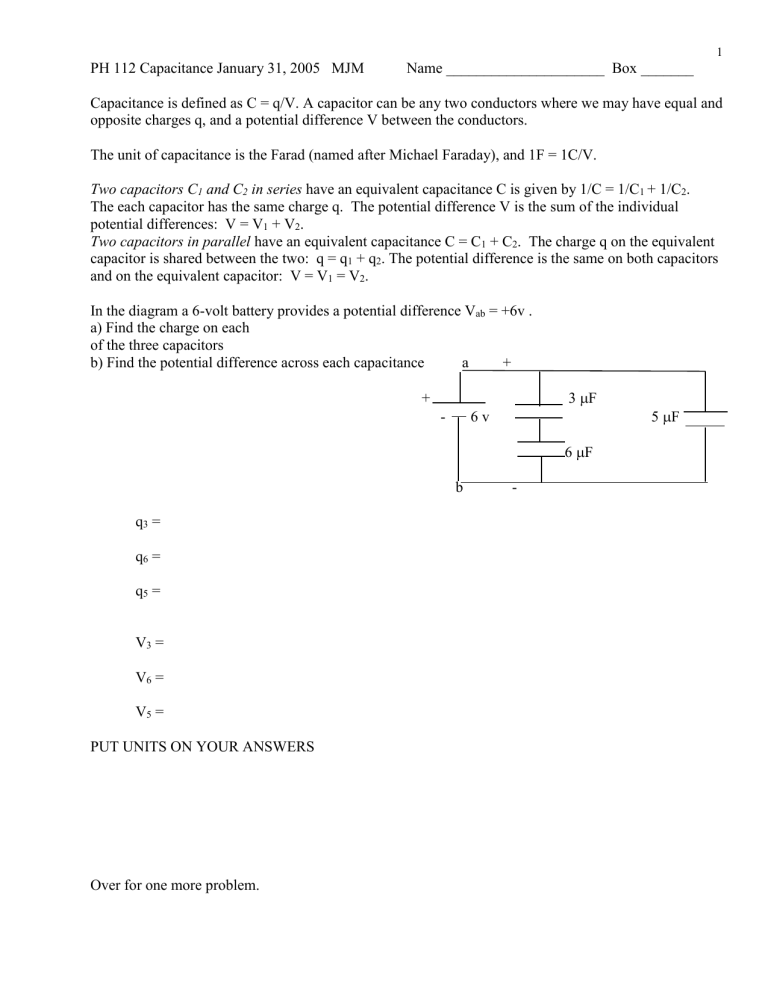
PH 112 Capacitance January 31, 2005 MJM Name _____________________ Box _______
1
Capacitance is defined as C = q/V. A capacitor can be any two conductors where we may have equal and opposite charges q, and a potential difference V between the conductors.
The unit of capacitance is the Farad (named after Michael Faraday), and 1F = 1C/V.
Two capacitors C
1
and C
2
in series have an equivalent capacitance C is given by 1/C = 1/C
1
+ 1/C
2
.
The each capacitor has the same charge q. The potential difference V is the sum of the individual potential differences: V = V
1
+ V
2
.
Two capacitors in parallel have an equivalent capacitance C = C
1
+ C
2
. The charge q on the equivalent capacitor is shared between the two: q = q
1
+ q
2
. The potential difference is the same on both capacitors and on the equivalent capacitor: V = V
1
= V
2
.
In the diagram a 6-volt battery provides a potential difference V ab
= +6v . a) Find the charge on each of the three capacitors b) Find the potential difference across each capacitance a +
+ 3
F
- 6 v 5
F
6
F q q
3
6
=
=
b - q
V
V
V
5
3
6
5
=
=
=
=
PUT UNITS ON YOUR ANSWERS
Over for one more problem.
q
6
=
V
2
=
V
3
=
V
4
=
V
6
= q
2
= q
3
= q
4
=
Find the charge on each capacitor and the potential difference across each.
2
F
+
- 12 v
6
F
3
F
4
F
2



